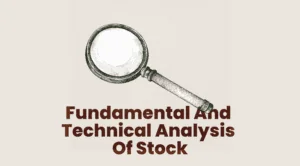There are two types of taxpayers: the typical taxpayer, who simply closes their eyes and pays the tax amount owed to the government; and the smart taxpayer, who methodically arranges his investments and pays a lot less tax by taking advantage of all the tax breaks available to him. We are on a mission to convert all taxpayers into smart taxpayers.
The concept of taxation has existed for almost 5000 years, first logged in Ancient Egypt. Tax is a financial charge levied by the local governing authority on the citizens for various administrative reasons such as- economic infrastructure (like roads and public transportation), maintaining sanitation, supporting legal systems, ensuring public security, providing education and healthcare, and even financing military efforts, scientific research, culture, and public works.
Paying your taxes in a timely and accurate fashion is important for the country’s economic growth. Currently, less than 3% of all Indians file their income tax returns. The government and the tax authorities are continuously introducing schemes and deductions that benefit taxpayers while also simplifying the process.
A brief about taxes
Taxes are broadly classified into two- Direct taxes, and indirect taxes. The two statutory bodies that govern them are the Central Board of Direct Taxes (CBDT) and the Central Board of Indirect Taxes and Customs (CBIC), respectively.
Taxes play a crucial role in sustaining government operations and services. But what to do when taxes are a burden on the ordinary man, start-ups, companies and so on? Thus, the government came up with this thing called ‘tax deduction’ schemes to reduce the tax liability levied upon individuals and firms. This eased the burden on the taxpayers and provided certain benefits to them for involving themselves in certain personal and social activities, which we shall discuss later
Before moving ahead, it is important to grasp the differences between the three taxation terminologies that get thrown around. That being- tax evasion, tax exemption, and tax exemption.
| Aspect | Tax Evasion | Tax Exemption | Tax Deduction |
| Definition | Illegal act of intentionally avoiding paying taxes that are owed | Legal provision allowing certain individuals or entities to be excused from paying taxes on certain income or activities | Legal provision allowing taxpayers to subtract certain expenses from their taxable income, thereby reducing the amount of tax owed |
| Legality | Illegal | Legal | Legal |
| Purpose | To unlawfully avoid paying taxes | To provide relief or incentive for specific individuals or activities | To reduce taxable income by deducting certain expenses |
| Consequence | Penalties, fines, and possible imprisonment | None | Reduction in taxable income, leading to lower tax liability |
| Examples | Underreporting income, hiding assets, and using offshore accounts | Non-profit organisations, certain government institutions, and educational institutions | Mortgage interest, charitable contributions, and medical expenses |
| Responsibility | Lies with the taxpayer | Granted by tax authorities or legislation | Claimed by the taxpayer on their tax return |
Basically, pay your taxes– but be smart and pay less taxes. If they catch Al Capone, they will definitely get you.
With that out of the way, we can proceed to
Tax deductions
Tax deductions are benefits provided by the income tax authorities to the taxpayers to reduce their tax liability, encourage savings and investments, charity and so on…
The thing with these deductions is that they are completely at the discretion of the taxpayer to claim benefits out of it. Therefore, it is up to us to identify and claim all the tax benefits that we can derive from tax deductions.
So you should put on your smart hat and strive towards deriving the maximum benefits out of this. Because saving taxes and consumption of Biryani are directly proportional to each other- higher the tax money saved, more is the budget for biryani!
But the question arises. Why would the government choose to lose out on free tax money? Where’s the benefit for the government?
To answer this question, it’s better if we take a look at the two categories of tax deductions-
Deductions due to Allowances and Expenses
The government grants certain deductions and allowances depending on what you spend your income on. For example- If you live in a rented house, and your employer provides a house rent allowance- you can claim a deduction on the rent that you paid, thus reducing your taxable income. Expenses such as insurance premiums, education loan interests, home loan interests, and so on can be claimed as a deduction.
Deductions due to investments and contributions
These deductions are available to the taxpayer, based on the investments they make and/or the contributions they pay. Deductions include donations to certain organizations, insurance premiums and other select long-term investments such as PPF, FDs, ELSS, etc. This incentivizes citizens to develop the habit of investing and financial planning, while also inculcating civic and social responsibility by donating to and contributing to good causes.
The government, by providing these deductions, sort of guides the people towards financial and spending habits deemed positive to the taxpayers, their families, society, and the state as a whole. By offering deductions on things such as pension schemes, insurance policies, interest on education loans and so on, the government incentivizes the citizens to secure their financial future and also contribute to the community.
Now that we understand why the government provides certain tax deductions, let us get into Section 80 of the Income Tax Act, 1961, which allows taxpayers to avail exemptions and deductions which lower their tax liability.
Section 80C
Up to 1.5 lakh rupees. UPTO 1.5 LAKH RUPEES! Can be saved by making use of this scheme. Section 80C in taxation is like how Superman is in DC- the most popular, strongest, and face of the show.
80C allows deductions on several tax-saving investments and eligible expenses. Deductions under this section can be claimed by individuals or HUFs and up to $1,50,000 can be claimed as deduction from the Gross Total Income (GTI) per year.
By investing in a diverse range of options such as Public Provident Fund (PPF), Life insurance, National Savings Certificate (NSC), and so on, you can avail benefits of up to Rs. 1.5 lakhs per year. The 1.5 Lakh cap is a cumulative figure. You can choose to invest the entire 1.5 Lakh on any of the options covered under 80C and claim the entire amount, or you can diversify your investments to various options and still claim up to 1.5 lakh as a tax deduction.
The list of deductions available under section 80C are as follows
- Equity-Linked Savings Scheme (ELSS) Funds
It is a mutual fund which mainly invests in equity instruments with a minimum of 3 year lock in period. You can claim a deduction of up to Rs 1.5 lakh for investing in the Equity Linked Savings Scheme and save tax up to Rs 46,800 a year in taxes.
- National Pension Scheme (NPS)
The NPS is a government-sponsored savings scheme designed for employees across private, public, and unorganised sectors, excluding the armed forces. It has a lock-in period that extends until the subscriber reaches the age of 60. The deduction limit for this section is Rs. 1.5 lakh. Should you choose, you have the option to invest the entire amount in NPS and claim the corresponding deduction.
- Unit Linked Insurance Plans
ULIPs are life insurance plans that combine investment opportunities with life coverage. They allow investment in equity, debt, and hybrid funds, offering returns that vary based on fund performance. ULIPs have a lock-in period of 5 years.
- Tax-Saving Fixed Deposits
These fixed deposits offer tax benefits under Section 80C of the Income Tax Act, 1961, subject to specific conditions. They come with a lock-in period of five years and provide fixed returns.
- Public Provident Fund (PPF)
The PPF is a government-backed savings scheme aimed at long-term financial goals. It matures 15 years from the date of account opening, with partial withdrawals permitted annually starting in the seventh financial year.
- Senior Citizen Savings Scheme (SCSS)
The SCSS is designed for individuals over 60 years old, with provisions allowing those over 50 or 55 to participate under certain conditions. It has a five-year lock-in period, after which the account can be closed or extended for another three years.
- Sukanya Samriddhi Yojana (SSY)
The SSY is a government-backed savings scheme for parents with a girl child. The scheme matures when the girl child reaches the age of 21.
And with that, you know where to invest. Congratulations. You just saved 1.5 lakh rupees in tax. You’re welcome. Aren’t you glad you stopped by this article? If you like what you read, do check out our other articles and blogs.
Section 80CCC
See, under section 80CCC, you get to see deductions for LIC. Lots of Cs. But seriously, this section lets individuals claim deductions in respect of premium paid towards the pension fund of Life Insurance Corporation (LIC). This includes either the amount paid to either purchase a fresh policy or renew an existing policy.
This deduction can be availed of by only Individuals irrespective of residential status. The amount of deductions depends. It is either the amount deposited or maximum limit of ₹1,50,000.
Deductions under Section 80CCC are capped at ₹1 lakh per year, while those under Section 80C are limited to ₹1.5 lakhs per year. Since Section 80CCC is a subset of Section 80C, the total combined deductions under these sections cannot exceed ₹1.5 lakhs annually.
The main distinction is that Section 80C allows investments in various savings schemes for tax deductions on taxable income, whereas Section 80CCC specifically provides tax deductions for contributions to annuity plans from public insurance companies and certain pension funds.
It brings us to an important topic of discussion. The importance of life insurance
Your life is not in your hands for the most part and life is unpredictable. A life insurance policy gives you and your family a sense of financial security in case of loss of life. It is a contingency plan, similar to Doctor Strange’s plan in the Avengers movie. You would not want to leave your loved ones in emotional and financial ruin in case your life unexpectedly ends. It doesn’t hurt to pay a little premium every month and have peace of mind for the rest of your life.
Therefore, the government provides deductions on insurances for two reasons:
- To incentivize the public to purchase life insurance policies to secure themselves and their families from unforeseen circumstances.
- If the government taxes them, it will discourage people from purchasing life insurance policies, thus hurting the insurance industry. People will be discouraged from buying insurances out of pocket, thus, increasing their reliance on public health services and ultimately raising long-term government expenditures
We now know the importance of insurance and understand why the deductions have been provided on insurance premiums. Let’s move on to the next one…
Section 80CCD
If you thought 80CCD deductions are related to discounts on cafe coffee day then go wash your face, fetch a coffee and focus on the article. 80CCD is with regards to pensions. It is categorised into 2 sub-sections-
- 80CCD(1)
This deduction applies to individuals who contribute to their National Pension Scheme (NPS) account. This scheme is available for grabs by both employees and self-employed, between the age of 18 and 60.
The deduction is limited to up to 10% of salary (basic pay + Dearness Allowance) for employees, and up to 20% of gross income for self-employed individuals. This is designed to encourage contributions proportionate to one’s income, ensuring that both employees and self-employed individuals can benefit from tax deductions based on their earnings.
The maximum deduction is ₹1.5 lakhs, which is included within the overall limit of Section 80C. This means that the combined total of deductions under Section 80C, Section 80CCC, and Section 80CCD (1) cannot exceed ₹1.5 lakhs per annum, ensuring a capped benefit across these sections.
- 80CCD(2)
This section deals with the employer’s contribution to his/her employee’s NPS account, for which the employee can claim a deduction for. This section is exclusive to salaried employees whose employer contributes to their pension account. Under 80CCD(2), there is no upper limit of 1.5 Lakh rupees. Instead, the deduction is limited to 10% of the employee’s salary.
Section 80CCD (2) is separate from the Section 80C limit, allowing for additional tax savings. This separation encourages employers to contribute to their employees’ NPS accounts without affecting the employees’ ability to claim deductions under Section 80C, promoting higher contributions and better retirement planning.
Speaking of pensions, we need to understand why planning your retirement through investing in pension schemes is important. We spend a majority of our lives tied to jobs, rarely taking a break to appreciate life, nature and experiences. But retirement gives us the opportunity to rethink our purpose and to rediscover who we are, using the extra time to focus on who and what is most important to us.
It is important to identify a monthly source of income once the regular cash flow stops. Pensions are one of the most common sources of income post retirement. By paying a regular premium, the policy provider will invest the premiums into any fund of their choosing. On retirement, the policy provider will pay out a lifetime pension to the retiree, guaranteeing a steady income post-retirement.
The government encourages taxpayers to invest in pension schemes and secure their life post-retirement by providing tax deductions under Sec 80CCD.
This brings us to the last Section for this article
Section 80D
The saying Health is wealth holds a lot of weightage. Therefore, to encourage taxpayers to insure their health, the government, under Sec 80D, provides deductions on health insurance premiums. It is important to be financially prepared in case our health takes a hit. In the age where medical consultations, surgeries, check-ups, scanning costs and even medicine costs are skyrocketing, having health insurance becomes a necessity.
Individuals and HUFs are eligible to claim deductions on the premiums they pay for their health insurance policies. A deduction of up to Rs.1 lakh can be availed under this section. But the amount of deduction also varies depending on a variety of factors-
| Policyholder Category | Deduction Amount |
| Self, spouse, and children below age 60 | Rs. 25,000 |
| Parents below age 60 | Rs. 25,000 |
| Self, spouse, and children above age 60 | Rs. 50,000 |
| Parents above age 60 | Rs. 50,000 |
| Members of HUF below age 60 | Rs. 25,000 |
| Members of HUF above age 60 | Rs. 50,000 |
The section also allows for deductions of ₹5000 to any payment made towards preventive health-checkups but the deductions are capped at. Just remember, the mode of payment is crucial. Do not pay in cash for health insurance premiums or medical expenses. Use other payment methods such as credit/debit cards, electronic fund transfers (EFT), UPI, and so on. For preventive health check-ups, payments can be made using any mode, including cash.
However, medical insurance premiums and medical expenses must be paid using non-cash methods, as cash payments are not eligible for deductions. This ensures preventive health measures are easily accessible, while deductions for insurance and medical expenses require clear, traceable transactions.
In total, the section offers a maximum deduction of ₹25000 and ₹50000 for senior citizens, but it can extend to ₹65000 under certain conditions.
Health insurance is crucial for protecting against high medical costs, providing access to necessary care, and easing financial burdens. It offers peace of mind by covering unexpected expenses and encouraging proactive health management through preventive care. Additionally, it helps manage chronic conditions and reduces stress associated with potential health issues. It is essential for ensuring both health and financial well-being for individuals and families.
Claiming your tax deductions
Don’t worry, we got you covered. We won’t give you all the information regarding tax deductions and skip town without telling you how to actually claim your income tax refund,
Just follow these steps and you should be good to go:
- File a Correct Income Tax Return (ITR) on Time: Ensure you submit an accurate ITR before the deadline. During this process, check your total advance tax payments under Form 26AS.
- Approval by Assessment Officer: After filing your return, the assessment officer will review your tax calculations. If your advance tax payments exceed your tax liability as per the filed ITR, the officer may approve your refund.
- Request a Review if Necessary: If needed, you can file Form 30 to request a review of your tax payments against your liability.
- Provide Bank Details: For faster refunds, provide your bank account details to facilitate direct transfers.
- Check Refund Status: Monitor the status of your refund on your e-filing dashboard after filing and verifying your ITR
You can claim a tax refund within 12 months after the end of the relevant assessment year.
Conclusion
I hope this article helped you keep more of your hard earned money to yourself, making the taxman jealous. But also remember, by claiming these deductions, you are also on the right track in your financial journey, which includes sound investment plans, pensions, insurance, and so on. The government ultimately wants the citizens to be beneficial to themselves before paying taxes that benefit the government and society. Thank you!
Happy investing!!! Or should I say,
Happy Tax Saving!!!



